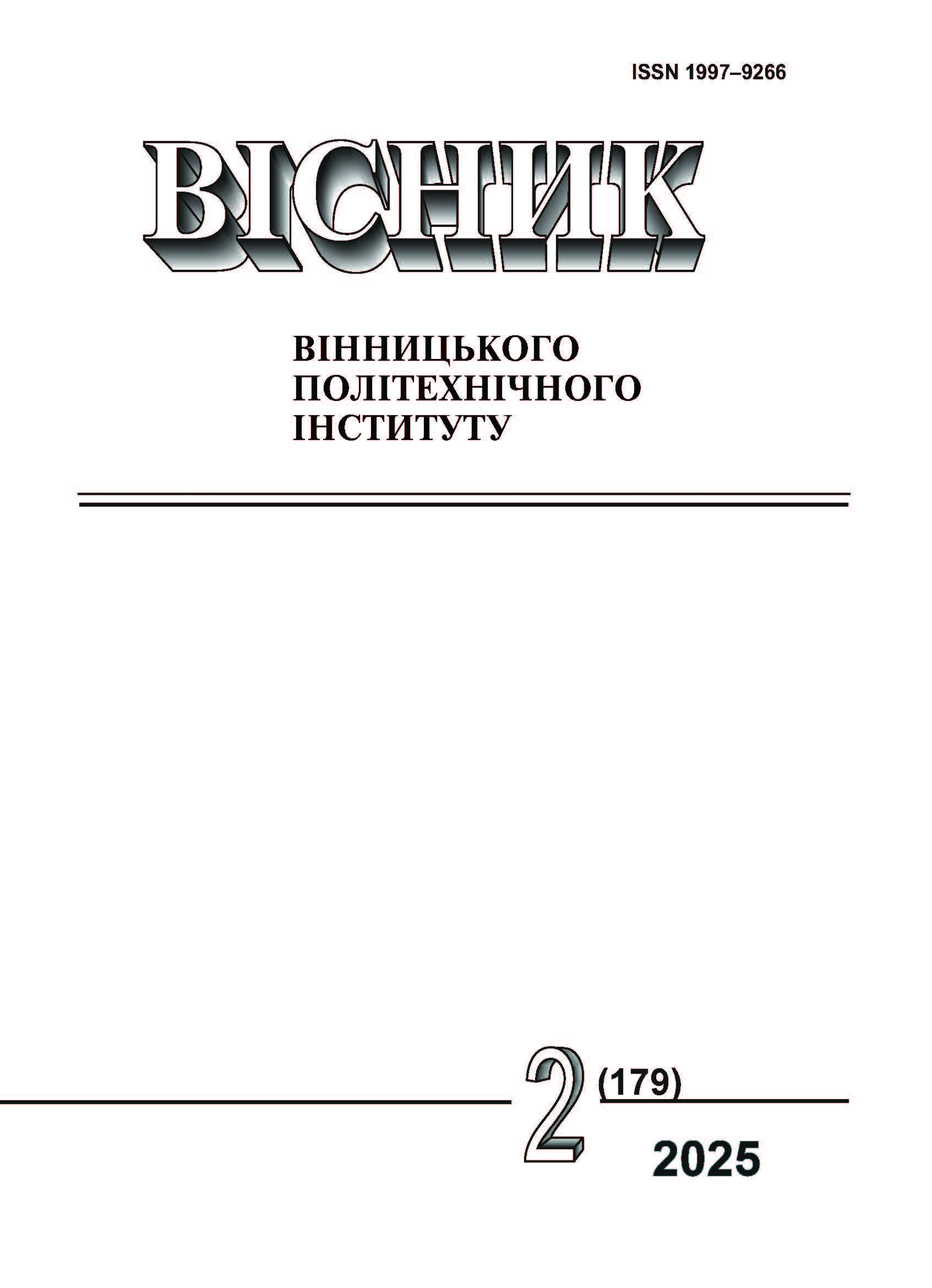Mathematical Models of Optimal Movement of Electric Car with Asynchronous Electric Drive on a Horizontal Section of the Road with the existing Settlement on it and a Stop in this Settlement
DOI:
https://doi.org/10.31649/1997-9266-2025-179-2-62-70Keywords:
electric vehicle, asynchronous electric drive, horizontal road segment, settlement, optimal traffic models, criterion for minimum power battery charge costs, imitations by dynamics, distance and signsAbstract
In our works [1]—[6], the problem of synthesizing mathematical models of optimal movement of an electric vehicle with an asynchronous electric drive both along a horizontal road segment, and in the presence of descents, ascents and turns, according to the criterion of minimum power battery charge consumption, but only on the condition that the electric vehicle must travel from one point to another in a certain period of time and taking into account the limitation caused by the dynamics of the electric vehicle, is solved. In this work, it is shown that the motion of the electric vehicle through a settlement from the standpoint of its optimization is significantly different from the movement outside this settlement, and it is proved that the algorithm for synthesizing models of optimal motion of the electric vehicle with asynchronous electric drive along a horizontal road segment, which takes into account in the Lagrange function only the limitation on overcoming a certain distance in a given time and the limitations caused by the dynamics of the electric vehicle, does not allow synthesizing models of optimal movement of this electric vehicle if there is a settlement on this horizontal road segment. It is shown what form the Lagrange function takes when the problem of synthesizing models of optimal movement of the electric vehicle along a horizontal road segment requires the appearance of a settlement on this segment to be taken into account. Mathematical models of optimal movement of the electric vehicle along a horizontal road segment based on the criterion of minimum power battery charge costs with a stop within the settlement and with the start of its movement both within the same settlement and beyond its borders have been synthesized. The synthesized mathematical models, after their identification, can be used in artificial intelligence training programs with a specific purpose for controlling electric vehicles with the asynchronous electric drive.
References
Б. І. Мокін, О. Б. Мокін, і В. В. Горенюк, «До питання оптимізації руху електромобіля з асинхронним електроприводом,» Вісник Вінницького політехнічного інституту, № 3, с. 32-38, 2019. https://doi.org/10.31649/1997-9266-2019-144-3-32-39 .
Б. І. Мокін, О. Б. Мокін, і В. В. Горенюк, «Метод ідентифікації моделей оптимального руху електромобіля з асинхронним електроприводом,» Вісник Вінницького політехнічного інституту, № 1, с. 32-38, 2020. https://doi.org/10.31649/1997-9266-2020-148-1-32-38 .
В. В. Горенюк, «Синтез та ідентифікація моделей оптимального руху електромобіля з асинхронним електроприводом по схилах і підйомах дороги,» Вісник Вінницького політехнічного інституту, № 2, с. 37-44, 2021. https://doi.org/10.31649/1997-9266-2021-155-2-37-44 .
Б. І. Мокін, О. Б. Мокін, і В. В. Горенюк, «Моделювання оптимального руху електромобіля з асинхронним електроприводом горизонтальним відрізком дороги,» Вісник Вінницького політехнічного інституту, № 5, с. 26-33, 2020. https://doi.org/10.31649/1997-9266-2020-152-5-26-33 .
В. В. Горенюк, «Моделювання оптимального руху електромобіля з асинхронним електроприводом на схилах і підйомах дороги,» Вісник Вінницького політехнічного інституту, № 5, с. 43-49, 2021. https://doi.org/10.31649/1997-9266-2021-158-5-43-49 .
Б. І. Мокін, О. Б. Мокін, і В. В. Горенюк, Системний аналіз оптимального руху електромобіля з асинхронним електроприводом, моногр. Вінниця: ВНТУ, 2023, 114 с. ISBN 978-966-641-946-3.
Б. І. Мокін, В. Б. Мокін, і О. Б. Мокін, Функціональний аналіз, адаптований до прикладних задач в галузі інформаційних технологій, навч. посіб. Вінниця: ВНТУ, 2020, 192 с. ISBN 978-966-641-796-4.
Downloads
-
pdf (Українська)
Downloads: 41
Published
How to Cite
Issue
Section
License

This work is licensed under a Creative Commons Attribution 4.0 International License.
Authors who publish with this journal agree to the following terms:
- Authors retain copyright and grant the journal right of first publication.
- Authors are able to enter into separate, additional contractual arrangements for the non-exclusive distribution of the journal's published version of the work (e.g., post it to an institutional repository or publish it in a book), with an acknowledgment of its initial publication in this journal.
- Authors are permitted and encouraged to post their work online (e.g., in institutional repositories or on their website) prior to and during the submission process, as it can lead to productive exchanges, as well as earlier and greater citation of published work (See The Effect of Open Access).





